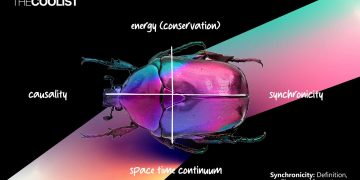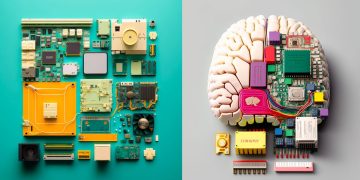Introduction
In today’s digital age, technology plays a vital role in our personal and professional lives. The proliferation of smartphones, social media platforms, and instant messaging services has revolutionized the way we interact with the world around us. Digital communication allows us to stay connected with family, friends, colleagues, and even strangers across the globe, 24/7. While this level of connectivity offers numerous advantages, it also comes with significant challenges, especially when it comes to balancing our online lives with face-to-face social interactions.
Many individuals find themselves spending more time online, interacting with virtual environments and digital personas, and less time engaging in real-world activities. This shift has sparked discussions about the impact of digital technology on our social well-being, mental health, and overall quality of life. How can we ensure that we’re using technology in a way that enhances, rather than hinders, our relationships and personal growth?
This article will explore the various ways in which we can achieve a healthy balance between our online lives and real-world social interactions. We will delve into the benefits and drawbacks of digital communication, the impact of excessive screen time on mental and emotional health, strategies for maintaining genuine relationships in a digital world, and the importance of setting boundaries for a fulfilling and balanced lifestyle.
1. The Evolution of Social Interaction in the Digital Age
A. The Rise of Digital Communication
Digital communication has transformed how people interact with one another. Social media platforms, such as Facebook, Instagram, Twitter, and TikTok, have allowed individuals to share their lives, opinions, and creative expressions with a global audience. Messaging apps like WhatsApp, Telegram, and Slack facilitate real-time communication, enabling friends, families, and colleagues to connect effortlessly, regardless of location.
- Social Media: Social media has made it easier than ever to stay in touch with friends and family, regardless of geographical distance. It has also created new spaces for people to meet others with shared interests, fostering communities that were once difficult to build in the offline world.
- Instant Messaging: Instant messaging has largely replaced phone calls and emails as the primary method of communication. Whether for casual conversations or work-related matters, these platforms have streamlined communication by making it faster and more accessible.
B. The Emergence of Virtual Communities
Online communities have become an integral part of the digital age. These communities, ranging from niche hobby groups to professional networks, allow individuals to connect with like-minded people without physical proximity. Online forums, discussion boards, and gaming communities also create virtual spaces for individuals to socialize and exchange ideas.
- Niche Communities: Platforms like Reddit, Discord, and specialized Facebook groups allow users to find and engage in communities that cater to their specific interests. This is particularly beneficial for individuals who may not have access to such communities in their immediate physical surroundings.
- Virtual Worlds: Video games and virtual worlds such as Second Life, Fortnite, and Minecraft have created spaces where individuals can socialize and form connections, often blurring the lines between virtual and real-world identities.
2. The Benefits of Digital Communication
A. Enhanced Connectivity and Access
One of the most significant benefits of digital communication is the ability to stay connected with others, regardless of location. For many individuals, technology has opened up new avenues for social interaction and personal growth:
- Staying in Touch with Loved Ones: Digital tools allow individuals to maintain relationships with family and friends who live far away. Video calls, instant messaging, and social media updates keep people connected in real-time, making it easier to nurture relationships even across long distances.
- Global Networking: Digital platforms have facilitated global networking opportunities, enabling individuals to meet and collaborate with people from diverse backgrounds. This has created new opportunities in business, education, and personal development.
B. Empowerment through Digital Presence
Social media allows individuals to create and curate their digital presence. This can help people express their identities, share their experiences, and even advocate for social causes they care about:
- Self-Expression: Social media platforms allow users to showcase their personalities, talents, and viewpoints to a broader audience, empowering individuals to express themselves in ways that may not have been possible in the offline world.
- Activism and Awareness: Digital platforms have been used as tools for social activism, enabling people to raise awareness about important issues, organize protests, and amplify voices that may have otherwise been marginalized.
3. The Negative Impact of Digital Communication
A. Social Isolation and Loneliness
While digital communication allows us to stay connected, it can also contribute to feelings of social isolation. The more time people spend online, the less time they spend engaging in meaningful face-to-face interactions. Over time, this can lead to a sense of loneliness and a lack of genuine connection:
- Shallow Interactions: Online interactions often lack the depth and emotional connection that face-to-face conversations provide. Social media interactions, in particular, can be superficial, offering likes, comments, and shares instead of meaningful, real-world conversations.
- Comparison Culture: Social media platforms can foster a sense of comparison, where individuals feel pressured to portray a perfect version of themselves. This can lead to feelings of inadequacy and isolation, particularly among younger generations.
B. The Impact on Mental Health
Excessive screen time and digital engagement have been linked to various mental health concerns, including anxiety, depression, and stress. The constant influx of information, notifications, and social comparison can overwhelm individuals and negatively affect their emotional well-being:
- Addiction: The addictive nature of digital platforms, particularly social media and video games, can lead to compulsive usage patterns, reducing time spent on real-world activities and relationships.
- Sleep Disruption: Excessive screen time, especially before bed, can disrupt sleep patterns, leading to sleep deprivation. Poor sleep, in turn, negatively impacts mood, productivity, and overall well-being.
C. The Decline of Face-to-Face Social Skills
As individuals spend more time online, they may experience a decline in their face-to-face communication skills. Virtual interactions lack the non-verbal cues—such as body language, tone of voice, and eye contact—that are essential for building rapport and understanding others:
- Difficulty with Social Cues: Over-reliance on digital communication can result in individuals struggling to interpret and respond to social cues in real-world interactions, leading to awkward or ineffective communication.
- Lack of Empathy: Online interactions often feel less personal, which can make it harder for people to empathize with others. The absence of physical presence can create a sense of emotional detachment, which may hinder the development of deep and meaningful relationships.

4. Strategies for Balancing Online Life and Real-World Social Interactions
A. Setting Boundaries for Screen Time
One of the most effective ways to balance online life with real-world interactions is by setting clear boundaries for screen time. This helps prevent digital overload and encourages individuals to prioritize face-to-face connections:
- Designating Tech-Free Times: Setting aside specific times during the day to unplug from digital devices, such as during meals or before bedtime, can create opportunities for offline interactions and promote healthier sleep habits.
- Digital Detox: Periodically disconnecting from social media and other digital platforms can help individuals regain a sense of control and reduce feelings of stress and overwhelm.
B. Fostering Real-World Relationships
While online connections can be valuable, it is essential to nurture face-to-face relationships to maintain emotional well-being:
- In-Person Socializing: Make an effort to engage in face-to-face interactions with friends and family, whether it’s over a meal, during outdoor activities, or at social events. These interactions provide an opportunity for deeper connection and emotional support.
- Quality over Quantity: It’s important to prioritize meaningful, quality relationships over superficial online connections. Focus on building strong bonds with a few people rather than trying to maintain a large number of online acquaintances.
C. Mindful Technology Use
Being intentional about how and when we use digital platforms can help ensure that technology enhances, rather than detracts from, our lives:
- Purposeful Social Media Usage: Instead of aimlessly scrolling through social media, use it purposefully to connect with loved ones, share meaningful content, or engage in discussions that contribute to personal growth.
- Balancing Work and Personal Life: In a world where work often bleeds into personal time through email and messaging apps, it’s crucial to set boundaries and dedicate time for personal activities, relaxation, and socializing without digital distractions.
5. The Future of Social Interaction in the Digital Age
A. The Role of Emerging Technologies
As technology continues to evolve, new tools and platforms will emerge that further shape our social interactions. Augmented reality (AR), virtual reality (VR), and artificial intelligence (AI) will likely play a significant role in how we engage with others in the future:
- Virtual Reality and Augmented Reality: VR and AR technologies could provide immersive experiences that replicate real-world interactions in a digital space. While this offers exciting possibilities for connecting with others, it will also require us to find ways to balance virtual experiences with genuine, physical connections.
- AI and Social Relationships: AI-powered virtual assistants and social robots are becoming increasingly common. These tools can assist with communication, organization, and entertainment, but it’s crucial to maintain the human element in relationships to preserve authentic emotional connections.
B. The Need for Balance in a Digital-First World
In the future, finding the right balance between online and offline life will be more important than ever. As society becomes more digitized, it will be essential to prioritize real-world connections and cultivate emotional intelligence alongside technological advancements.
Conclusion
The digital age has brought with it unprecedented connectivity and access to information, but it also poses significant challenges to our social lives and mental health. Striking a balance between online life and real-world social interactions is essential for maintaining meaningful relationships, emotional well-being, and overall quality of life. By setting boundaries for screen time, fostering real-world connections, and being mindful of technology’s impact on our daily routines, we can create a healthy, fulfilling balance that allows us to thrive in both the digital and physical worlds.
















































Discussion about this post